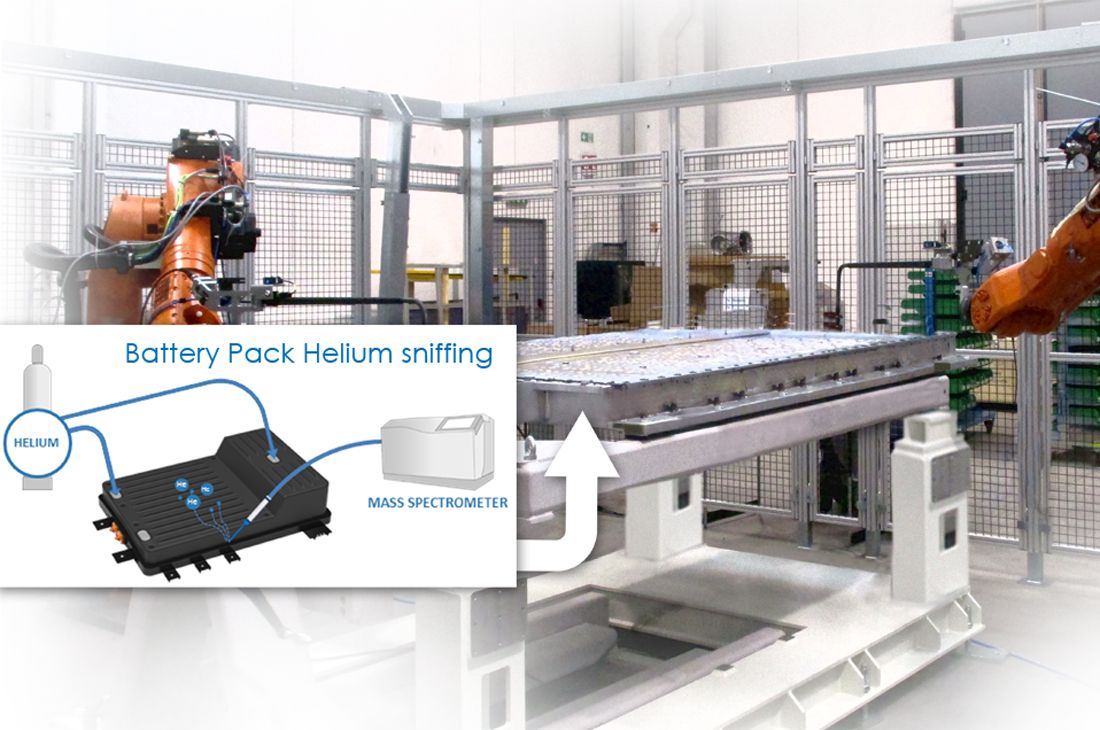Leak Testing Of Battery Pack With Sniffing System
Leak testing is a fundamental operation in the battery pack assembly process, to check the hermetic seal of the battery pack, in order to prevent the entry of water, humidity, dust or other external contaminants, which could cause a short-circuit on the high voltage components contained inside.

Example of an automatic sniffing application with helium as tracer gas. Two robots with sniffing probes are used to check the leakage at specific points of the pack assembly.
This technique of control on the finished components and totally assembly provides a reliable method to identify all the defects that could allow the entry of water inside the pack.
The testing method with tracer gas guarantees the maximum sensitivity and the possibility to identify extremely low leaks, also for big volumes of the part and in any environmental condition.
The possibility to identify the origin of the leak on parts that have been previously detected as scrap in a global testing, makes the method suitable also for manual sniffing applications in repair station, in order to carry out corrective actions aimed at the recovery of the component.
Our helium leak test systems with sniffing are capable of testing leaks with thresholds in the range of 10-2 - 10-4 SCC/sec. This technology delivers great results in this range and makes the application simple and reliable.
The application is completed with air testing method (pressure decay or mass flow) for checking of the assembled cooling circuit.
- Detects leaks up to 10-4 SCC/sec
- Tracer gas method independent on part and ambient temperature
- Suitable for testing of parts with big volume and deformable housing
- Identification of the position of the leak
- Cycle time optimization, using multiple robot sniffers
- Built according to customer’s specifications
- Dedicated or flexible solutions
- Robust construction
- Easy to maintain thanks to the easy accessibility to their components
- Manual or automatic solution
- High reliability
- Low running costs
- Detected leaks up to 10-4 SCC/sec
- Cycle time depending on the specific application requirements
- Fully automatic testing station, with one or more robot sniffing, for 100% in-line inspection
- Manual sniffing station for off-line recheck of scrap parts in repair stations
- Integrated air method (pressure decay or mass flow) for testing of the cooling circuit